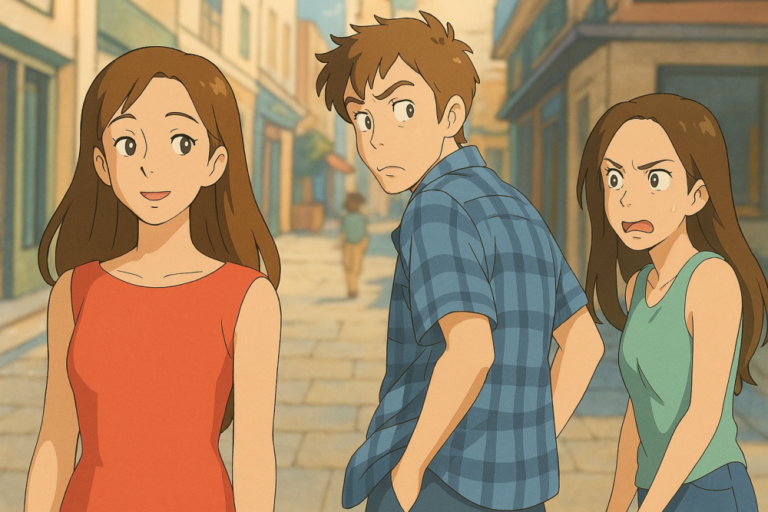For someone like me who lives in the Maldives, the international trend is something that would hit us perhaps a few good days after it has gone across the entirety of the rest of the world.
However, the same may not be so accurate with the advent of social media platforms that are applicable and available across the world; which allows users to consume all forms of content almost at a real-time basis.
Before I digress into the advancement of technology – more acutely in the realm of the internet and social media – I must bring the focus into the topic at hand today.
Recently, a new trend has taken the internet by storm. Users are heading up to ChatGPT to put real-life images of themselves and have them generated into anime art; more specifically in the art style of one of the most famous and commercially successful anime studios out there – Studio Ghibli.
That’s right, the same Studio Ghibli that has given us timeless gems including Spirited Away, Howl’s Moving Castle, and Princess Mononoke to name a few.
To get your image done in the said style, all you have to do is feed a picture of yourself and type in the command to have the picture generated in Studio Ghibli style – AI will get to working and does the rest while you lean back on your chair sipping on that boba tea of yours.
Everyone’s doing it. It would dishonesty if I said I had not tried my hand at that as well.
While the allure of getting to transform some of your precious moments into anime art is quite prominent, there can be no denying that this little trend would definitely throw a certain corner of the population into fits of rage.
Yes, the individuals who go through the painstaking tasks of actually drawing or painting anime art; whether it be via traditional hand-drawn methods or ‘traditional’ digital artworks.
What is traditional at this point?
Before any argument can be had about whether AI is here to replace traditional art, the first and foremost thing to address is that with the advent of artificial intelligence; what can now be called as ‘traditional art’?
Now, before you get confused, allow me to clear the room off of dust a little and assert that traditional art and digital art are in fact, two things. However, I do believe that the emergence of AI could perhaps put digital art into a category of ‘traditional’ art; perhaps contemporary ‘traditional’ art or modern ‘traditional’ art.
Traditional art has been described as art made using more physical or conventional media such as pencils, charcoal, oil paint and such. Digital art is art created using tools such as computers and digitally coded information.
Today, animations are generally created using digital tools as gone are the days when artists would draw each and every single scene on paper. Even for 2D animations, the animators and artists utilize digital tools for the purpose. They may still use hand-drawn methods for conceptualization and early-design purposes.
If that is the case, then can AI-generated art be also categorically put in the same basket as digital art?
The above statement would find disparity; given that there would be those who may argue that the two should come under ‘digital art’ as digital or technological tools are employed in the creation of art, while there would a greater demographic who would argue that when it comes to digital art, an artist’s actual physical labor is in play whereas, with AI-generated art, anyone can extract results by simply feeding relevant commands into an AI chatbot.
“Not all art forms will be affected equally,” writes Kate Brunotts in an article titled ‘AI will not replace artists. It will devalue them.’ She adds, “In cases where art is required to be passable and not personal, AI is likely to take over the field entirely.”
The above statement appears to be true, especially with the current Studio Ghibli trend becoming popular among netizens. Jumping in on the bandwagon of “I am also going to follow this cool trend” would require for users to generate said anime-inspired images that are passable as ‘Strudio Ghibli style’ art; although the same users may claim these AI-generated images of themselves in anime art-style is personal – which is not the case.
Another writer points out that AI is already here, and that it is here to stay but adds whether the question of AI being able to make artists obsolete or not cannot be answered so straightforwardly.
“While it seems unlikely that AI will replace artists entirely in the foreseeable future, it certainly has a role to play in the evolution of art,” the writer added.
Rudi Zygadlo, writing for The Guardian had reached out to artist-musicians Holly Herndon and Mat Dryhurst – both of whom are AI veterans, and had utilized an “AI baby” to help create Herndon’s 2019 album Pronto – asking if AI would kill the human artist, to which they replied; “No. Human artists will make works using AI and works that will reject AI… Artistry is always evolving. We have to digest that many things that would have appeared virtuosic by 20th-century standards will be able to be generated in microseconds by an AI model.”
To cut short an argument that may exceed beyond what is a reasonable word-limit; it is safe to come to a postulation – at least, based on the current available perspectives – that though AI-generated art will continue to become more prominent and widely utilized; it would not replace traditional art.
For AI to be able to generate information or data; be it in the form of generated imagery or responses to queries, it needs to rely on available information. AI would be unable to generate Studio Ghibli-inspired images without the existence of Studio Ghibli’s art in the first place; which has been created by human artists.


